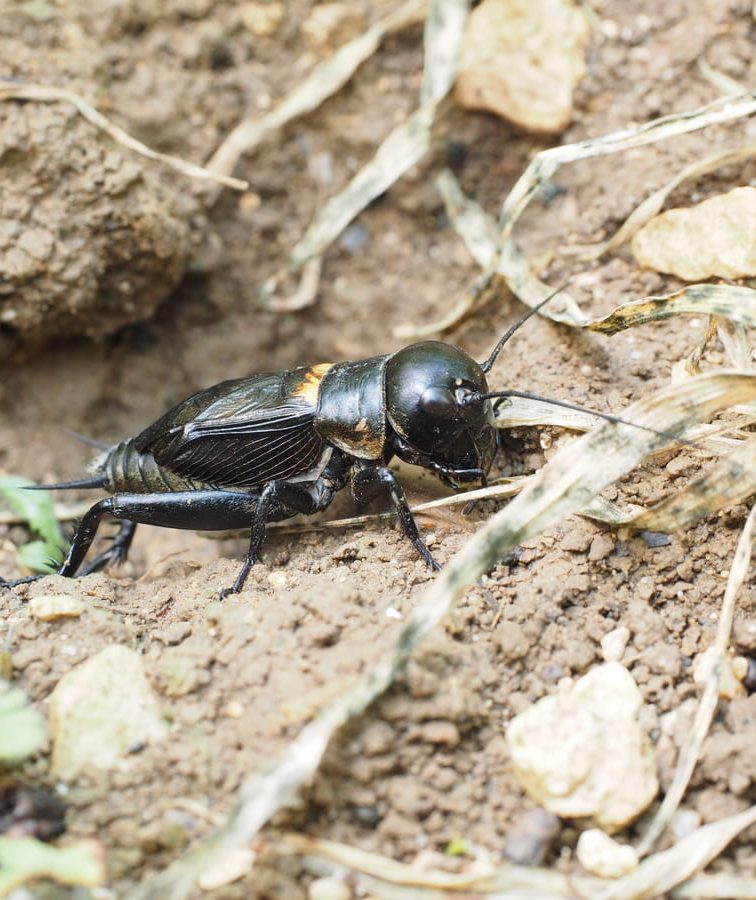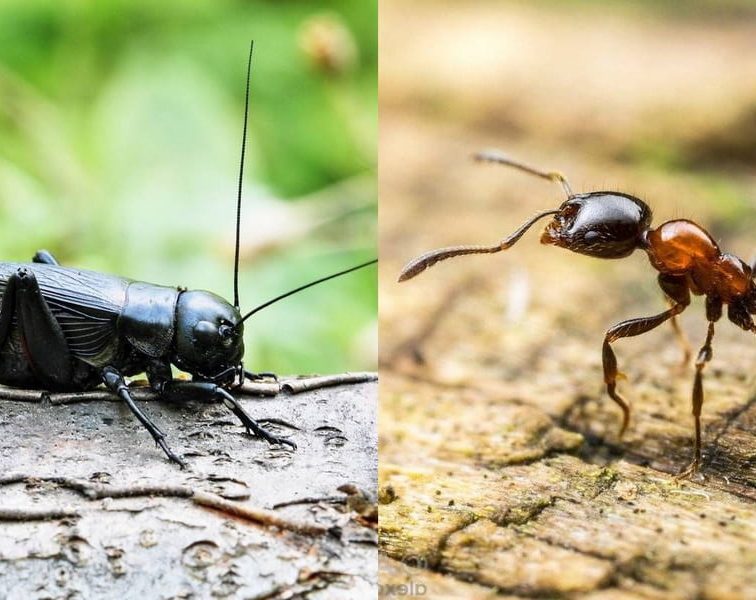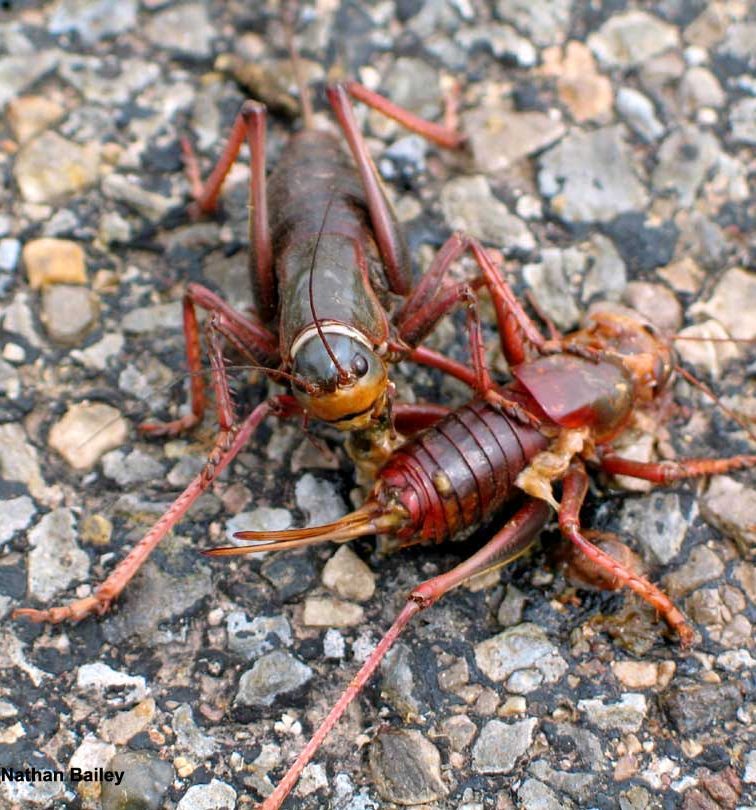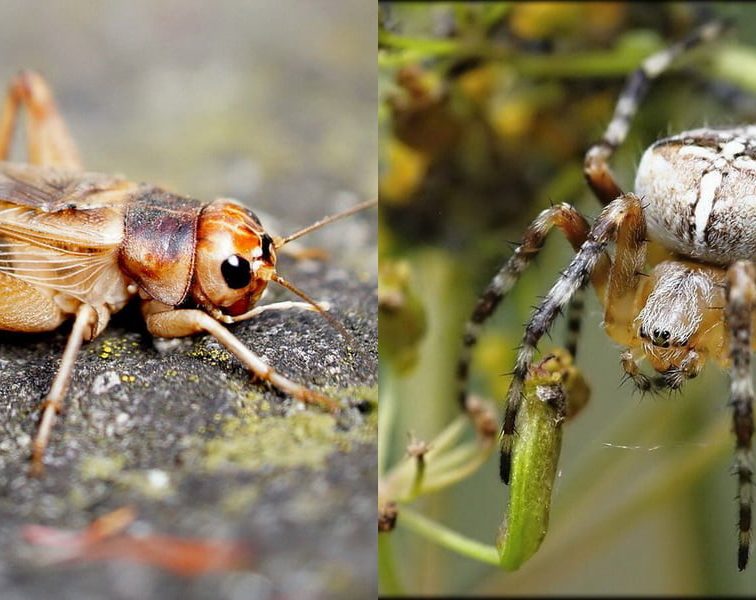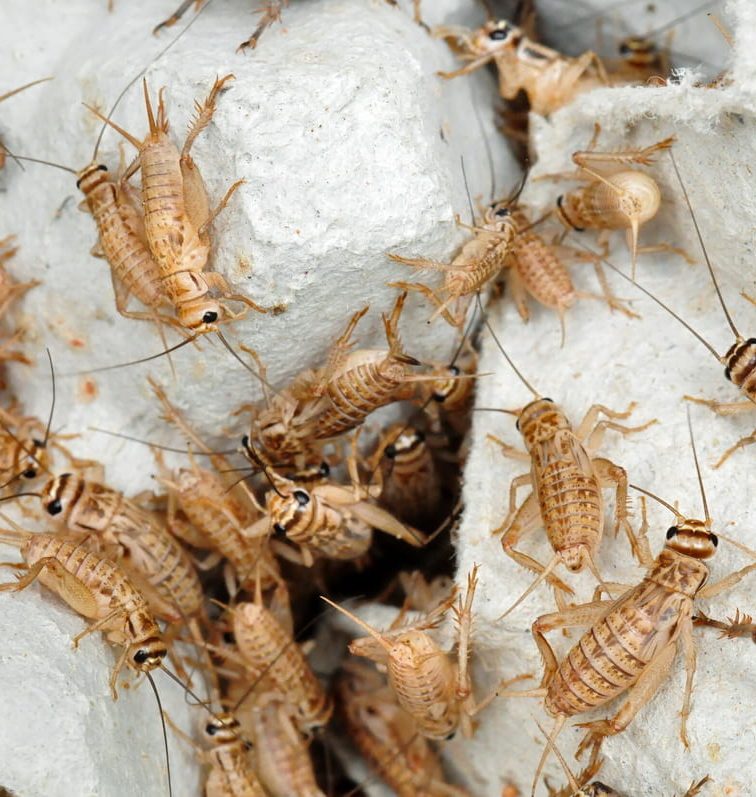The question, “Do crickets eat cockroaches?” unveils a hidden facet of the insect world. Surprisingly, crickets, often associated with their musical chirps, are not mere herbivores but can be opportunistic omnivores. This reveals their lesser-known predatory instincts, especially when usual food sources dwindle.
Exploring whether crickets prey on cockroaches offers insights into their survival strategies and ecological roles. This investigation challenges our usual perceptions of these common insects, revealing a complex web of interactions in nature.
The Intriguing Diet and Hunting Behaviors of Crickets
Crickets exhibit a diverse range of behaviors and dietary habits that have been the subject of extensive research. Their omnivorous nature allows them to consume both plant and animal matter, adapting their diet based on availability and environmental conditions. Advanced research techniques, including genome editing, have been employed to study crickets in various contexts, including their development, behavior, and biological functions.
Crickets use their well-developed sensory organs to interact with their environment. They rely heavily on their antennas to detect food and prey, using smell to locate potential food sources. Additionally, crickets are equipped with large compound eyes, which provide them with a wide-covering sight, crucial for keeping track of moving prey. These sensory adaptations are integral to their hunting methods.
Crickets are also known for their impressive jumping ability, which aids in their hunting and evasive maneuvers. Their strong hind legs are adapted for leaping, enabling them to cover significant distances relative to their body size. This ability not only assists in predation but also provides a means of escape from predators.
In summary, the diet and hunting behavior of crickets are complex and multifaceted, influenced by their omnivorous nature, sensory adaptations, and physical abilities. Their behavior is a subject of ongoing scientific interest, contributing to our understanding of insect ecology and biology.
The Complex Interaction Between Crickets and Cockroaches in Nature
In the complex ecosystem, the interaction between crickets and cockroaches is marked by opportunistic behavior. Crickets, typically omnivorous, can prey on cockroaches in certain conditions, especially when other food sources are scarce.
Crickets as Opportunistic Predators of Cockroaches
Crickets have been observed to occasionally prey on cockroaches, especially when other food sources are scarce. This opportunistic predation mainly occurs in situations where crickets face a lack of their usual diet, which primarily consists of plant matter and decaying organic materials. In such circumstances, crickets can utilize their strong jaws and keen sense of smell to hunt and consume smaller or weaker cockroaches.
Limited Impact on Cockroach Populations
Despite their ability to prey on cockroaches, crickets are not considered effective or significant predators of cockroach populations. The natural dynamics between these two insect species do not significantly impact the overall number of cockroaches. Crickets, as omnivores, do not rely solely on cockroaches for food and will generally prefer other food sources when available.
Cockroach Survival and Adaptation
Cockroaches are highly resilient and adaptable insects, known for thriving in various environments. Their life cycle, which includes stages from nymph to adult, allows them to rapidly reproduce and maintain their populations despite the presence of predators like crickets. Cockroaches are also known for their scavenging behavior, feeding on a wide range of organic materials, which contributes to their survival in diverse habitats.
The interaction between crickets and cockroaches illustrates a small part of the complex web of predator-prey relationships in nature. While crickets can prey on cockroaches under certain conditions, their role in controlling or impacting cockroach populations is minimal. This dynamic showcases the adaptability and survival strategies of both insects in their natural environments.
Benefits of Crickets in Pest Control

Image: nexles.com
Crickets, while not primarily used for pest control, do offer some benefits in managing certain insect populations. They can indirectly aid in controlling roach populations to a limited extent, mainly due to their omnivorous diet that includes various insects. However, it’s important to note that crickets are not highly effective or reliable as a sole method for controlling cockroach infestations. Their role in insect population control is more general and not specifically targeted towards cockroaches.
Crickets contribute to a healthy ecosystem by serving as a natural food source for many animals, including birds, reptiles, and amphibians. Their presence in an environment can help attract a more diverse range of wildlife, thereby creating a balanced ecosystem. Additionally, crickets assist in soil aeration and provide nutrients, which are beneficial for plant growth. This aeration process is important for improving soil structure and fertility, and it also creates a hospitable environment for other beneficial organisms.
In terms of pest control, crickets can deter other insect species through their chirping and feed on pests such as aphids, thus indirectly helping maintain a balance in the ecosystem. However, for more targeted and effective control of cockroach populations, other methods such as the use of parasitoid wasps and predatory nematodes are recommended. These biocontrol agents specifically target cockroaches and have been shown to be effective in controlling their populations.
In summary, while crickets can play a role in the natural control of some pest populations, they are not a reliable or effective method for controlling cockroach infestations on their own. For more targeted pest control, especially for cockroaches, alternative methods should be considered.
Alternative Natural Methods for Cockroach Control

Image: cookist.com
To effectively control cockroach infestations naturally, several methods can be employed:
- Boric Acid: Boric acid acts as a stomach poison for cockroaches. It should be sprinkled in areas where cockroaches are active, such as under sinks and behind appliances. Care should be taken as boric acid can be toxic if ingested in large quantities by humans or pets.
- Diatomaceous Earth (DE): This natural powder works by damaging the exoskeleton of cockroaches, causing dehydration and death. It should be applied in dry areas for maximum effectiveness.
- Bay Leaves: The scent of bay leaves repels cockroaches. Placing whole or crushed bay leaves in areas prone to cockroach activity can deter them effectively.
- Essential Oils: Certain essential oils, such as peppermint, eucalyptus, and tea tree oil, are known to repel cockroaches. A solution of these oils can be sprayed in areas where cockroaches are present.
- Catnip: Catnip contains nepetalactone, which repels cockroaches. Placing dried catnip or using catnip tea spray can deter these pests.
- Vinegar: While not lethal to cockroaches, the scent of vinegar can act as a deterrent. Spraying a solution of water and vinegar in areas infested by cockroaches can help keep them away.
- Cucumber Slices or Peels: Some sources suggest that the smell of cucumber peels may repel roaches, making it a simple and safe method to try in infested areas.
- Neem: Neem oil is a natural insecticide that can inhibit cockroach egg-laying and kill young roaches.
- Cleaning and Prevention: Regular cleaning, sealing cracks and holes, and eliminating water sources are crucial in creating an environment less attractive to cockroaches, thereby enhancing the effectiveness of natural remedies.
It is important to note that while these natural methods can be effective, they may require more frequent application compared to commercial products and are generally less potent. In severe infestations, professional pest control services might be necessary.
Conclusion
Crickets, as opportunistic omnivores, can contribute to controlling cockroach populations in certain conditions, particularly when other food sources are scarce. However, their impact on significantly reducing roach populations is limited. Therefore, relying solely on crickets for cockroach control is not effective.
Alternative natural methods, such as boric acid, diatomaceous earth, bay leaves, essential oils, and maintaining cleanliness, are more reliable in managing cockroach infestations. These methods offer safer, eco-friendly options but may require more frequent application compared to commercial pesticides.
For a comprehensive approach to pest control and a deeper understanding of the ecological role of crickets, further reading and research are encouraged. Sources like academic journals, pest control specialists, and ecological studies can provide valuable insights into effective pest management strategies and the fascinating interplay between different species in our ecosystem.
FAQ
What insects kill cockroaches?
There are several insects known to prey on cockroaches. Some notable examples include praying mantises, certain types of beetles like ground beetles, and centipedes. These predators are effective in hunting and consuming cockroaches, contributing to natural pest control in the environment. For instance, praying mantises use their adept hunting skills to capture and eat cockroaches, while centipedes immobilize their prey with venom.
Are crickets good to have in your house?
Crickets can have both positive and negative aspects when present in a house. On the positive side, they can contribute to controlling certain pest populations and are part of the natural ecosystem. However, crickets in the home can also be a nuisance. They can feed on fabrics, paper, and other materials, causing damage. Their chirping, especially at night, can be loud and persistent, which may be bothersome. Therefore, while they play a beneficial role in the ecosystem, their presence inside homes is generally considered undesirable.
Are crickets as dirty as cockroaches?
Crickets and cockroaches have different behaviors and habitats that influence their cleanliness. Cockroaches are often associated with dirty environments and are known to carry various pathogens due to their scavenging nature in unsanitary areas. Crickets, on the other hand, primarily feed on plant matter and decaying organic materials and are less likely to be found in as many unhygienic conditions as cockroaches. Therefore, while all insects can carry germs, crickets are generally not considered as dirty or as much of a health risk as cockroaches.






